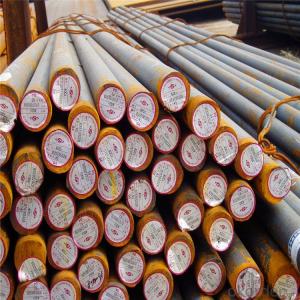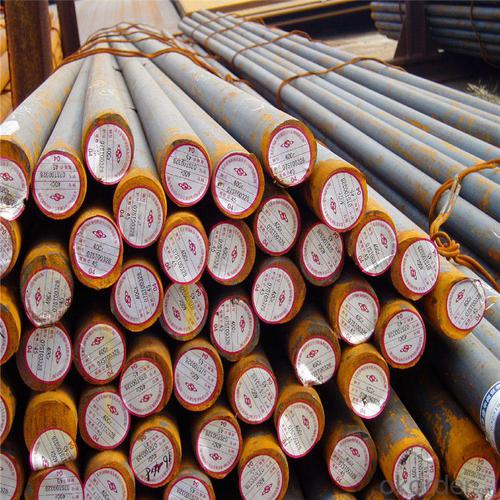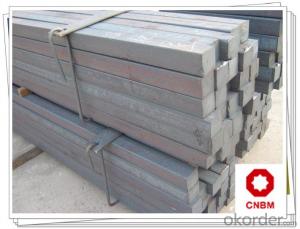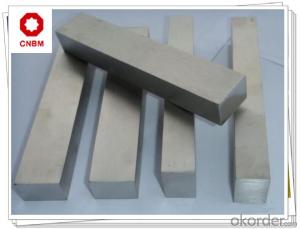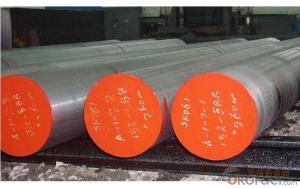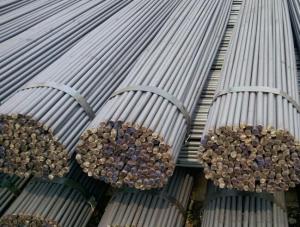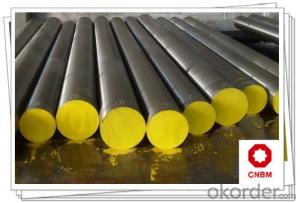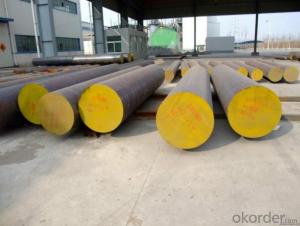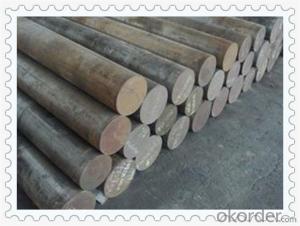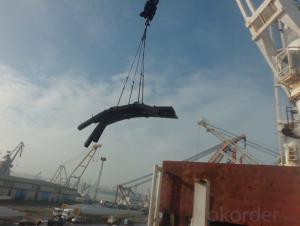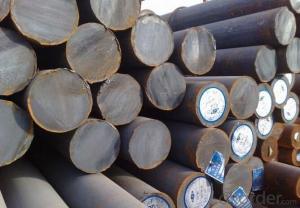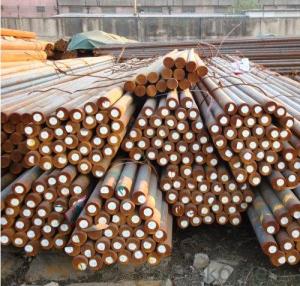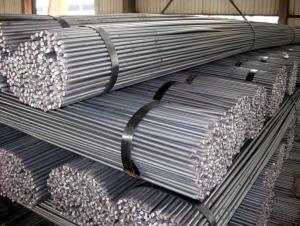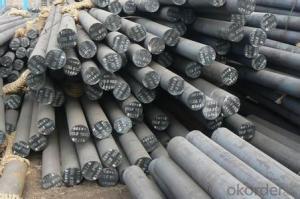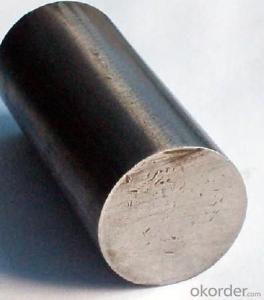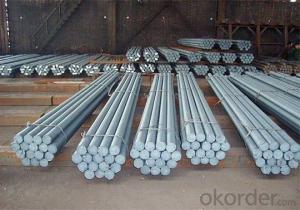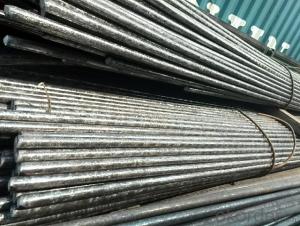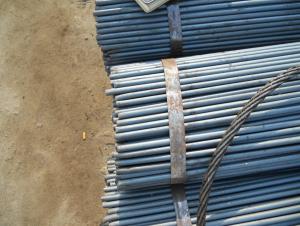1040 1045 Hot Rolled Carbon Steel Bar
- Loading Port:
- Tianjin
- Payment Terms:
- TT OR LC
- Min Order Qty:
- 100 m.t.
- Supply Capability:
- 500000 m.t./month
OKorder Service Pledge
OKorder Financial Service
You Might Also Like
Specification
1040 1045 Hot Rolled Carbon Steel Bar
Product Description of 1040 1045 Hot Rolled Carbon Steel Bar
1. Steel grade: SAE1040, 40#, C40, S40C
2. Length: 6M-12M
3. Diameter: 16mm-300mm
4. Product range: round bar, flat bar, square bar
5. Technique: Hot rolled, forged, cold drawn
Specification of 1040 1045 Hot Rolled Carbon Steel Bar
Material | 1040 | Round bar | Dia(mm) | 16-300mm |
Process | EAF + LF + VD + Forged + Heat Treatment (optional) | Length (mm) | Max 12m | |
Heat treatment | Normalized / Annealed / Quenched / tempered | Flat bar | Thickness(mm) | 8-500mm |
Delivery condition | Hot forged +Rough machined (black surface after Q/T)+ Turned (optional) | Width(mm) | 70-200mm | |
Test | Ultrasonic test according to SEP 1921-84 D/d | Length (mm) | Max 12m |
Chemical Composition of 1040 1045 Hot Rolled Carbon Steel Bar
C | Si | Mn | Cr | Ni | Cu |
0.37~0.43 | 0.17~0.37 | 0.35~0.65 | ≤0.25 | ≤0.30 | ≤0.25 |
Photo Show of 1040 1045 Hot Rolled Carbon Steel Bar
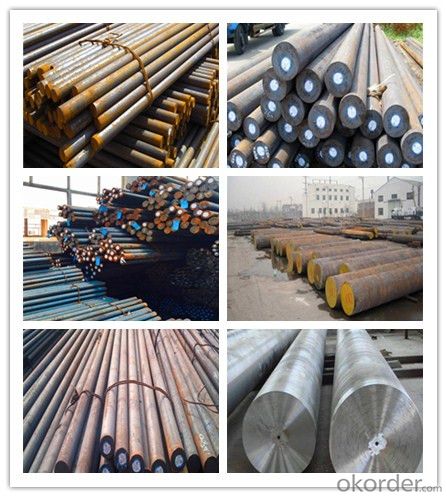
Packing and Delivery:
Packing in bundle package, or as customer's requirements.
Delivery Detail: 45 days after receiving the deposit.
Usage and Applications of 1040 1045 Hot Rolled Carbon Steel Bar
1. Steel round bar is used in a large number of architectural and engineering structures. Or it can be used in construction of plants for the production of steel house frames, high-voltage transmission towers, bridges, vehicles, boilers, containers, ships, etc.
2. And we can use this kind of product on the performance of the mechanical parts if the demand is not very high.
3. Some special material steel round bar can be used for main shaft of steamer, hummer shank, with big section and supper force.
Company Information
CNBM International Corporation is the most important trading platform of CNBM group.
Whith its advantages, CNBM International are mainly concentrate on Cement, Glass, Iron and Steel, Ceramics industries and devotes herself for supplying high qulity series of refractories as well as technical consultancies and logistics solutions.

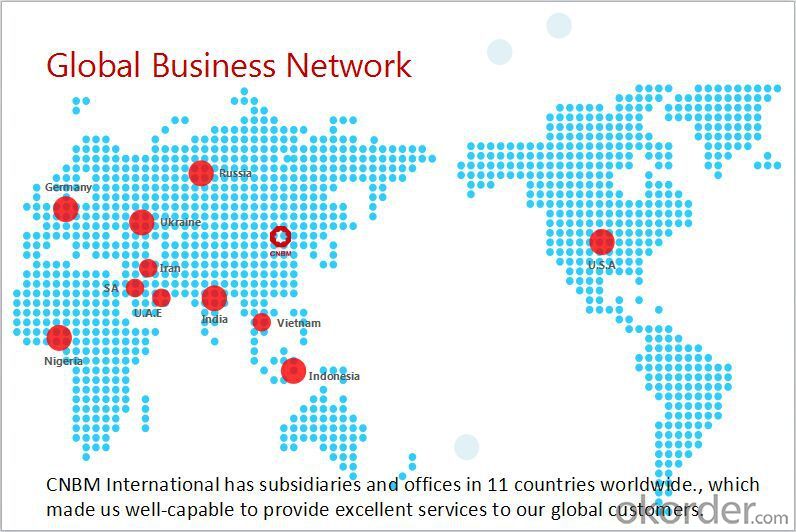
F A Q
1, Your advantages?
professional products inquiry, products knowledge train (for agents), smooth goods delivery, excellent customer solution proposale
2, Test & Certificate?
SGS test is available, customer inspection before shipping is welcome, third party inspection is no problem
3, Factory or Trading Company?
CNBM is a trading company but we have so many protocol factories and CNBM works as a trading department of these factories. Also CNBM is the holding company of many factories.
4, Payment Terms?
30% TT as deposit and 70% before delivery.
Irrevocable L/C at sight.
5, Trading Terms?
EXW, FOB, CIF, FFR, CNF
6, After-sale Service?
CNBM provides the services and support you need for every step of our cooperation. We're the business partner you can trust.
For any problem, please kindly contact us at any your convenient time.
We'll reply you in our first priority within 24 hours.
- Q: Can steel round bars be used for making pipelines?
- Pipelines can indeed be constructed using steel round bars. Steel is commonly utilized in pipeline construction because of its robustness, longevity, and ability to resist corrosion. Cylindrical in shape, round bars are easily manufactured and can be joined together through welding to create pipelines of different sizes and lengths. The steel round bars employed for pipelines typically consist of carbon or alloy steel, both of which possess substantial tensile strength and can endure high pressure and temperature conditions. Moreover, protective coatings like epoxy or polyethylene can be applied to steel round bars to heighten their resistance to corrosion. As a whole, steel round bars offer a dependable and efficient choice for building pipelines across various industries, including oil and gas, water supply, and construction.
- Q: What is the standard length of a steel round bar?
- The standard length of a steel round bar can vary depending on the specific industry and its intended use. However, in general, the standard length of a steel round bar is typically 20 feet or 6 meters. This length is commonly used in construction, manufacturing, and engineering applications. It is important to note that custom lengths can also be obtained, as per the requirements of a particular project or application.
- Q: What is the maximum weight of a steel round bar?
- The maximum weight of a steel round bar depends on its diameter and length. The weight can vary from a few pounds to several tons for larger and longer bars.
- Q: Can steel round bars be hardened through heat treatment?
- Yes, steel round bars can be hardened through heat treatment. Heat treatment processes such as quenching and tempering can be used to change the microstructure of the steel, resulting in increased hardness and strength.
- Q: Can steel round bars be cut to custom lengths?
- Indeed, it is possible to cut steel round bars to tailor-made lengths. These bars made of steel are adaptable and can be effortlessly cut using different techniques like sawing, shearing, or torch cutting. These approaches enable accurate adjustments to be made to meet specific demands or project necessities. Moreover, steel round bars are often obtainable in standard lengths, but they can be conveniently shortened or elongated by welding separate pieces together. All in all, steel round bars provide versatility in terms of length customization, rendering them suitable for a diverse array of applications.
- Q: What are the different surface finishes for stainless steel round bars?
- Different surface finishes can be applied to stainless steel round bars depending on the desired aesthetic appeal and functional needs. Some common surface finishes for stainless steel round bars include the following: 1. Bright Annealed (BA): This finish is achieved by annealing the stainless steel round bar in a controlled atmosphere, resulting in a smooth and highly reflective surface. It is often used for decorative purposes due to its mirror-like appearance. 2. Mill Finish: Also known as hot rolled or hot-rolled annealed and pickled (HRAP), this surface finish is the untreated surface directly from the mill. It has a rough and pitted texture, making it suitable for industrial applications where appearance is not the main concern. 3. Satin Finish: Also referred to as brushed or dull polished finish, this surface finish is achieved by brushing the stainless steel round bar with a fine abrasive material. It creates a soft and matte appearance with visible parallel lines. 4. Polished Finish: This finish is achieved by progressively using finer abrasive materials to polish the surface of the stainless steel round bar. It results in a high-gloss, mirror-like finish that is commonly used for decorative purposes. 5. Ground Finish: This surface finish is achieved by grinding the surface of the stainless steel round bar using abrasive belts or wheels. It creates a uniform and smooth surface with a matte appearance. 6. Bead Blasted Finish: This finish is achieved by bombarding the surface of the stainless steel round bar with small glass beads at high pressure. It creates a uniform and matte appearance with a slightly textured feel. 7. Electropolished Finish: This finish is achieved by immersing the stainless steel round bar in an electrolytic bath and applying an electric current. It removes a thin layer of material, resulting in a smooth and shiny surface with improved corrosion resistance. Each surface finish possesses its own distinct characteristics and is selected based on the specific requirements of the application.
- Q: What are the different packaging options for steel round bars?
- Customers have various packaging options to choose from when it comes to steel round bars, depending on their specific needs and requirements. Some commonly used packaging options include: 1. Bundles: Steel round bars can be bundled together using steel straps or wire to create a compact and secure package. The bundles come in different sizes, ranging from 2 to 5 tons, and are suitable for transportation and storage purposes. 2. Wooden Crates: For enhanced protection during transportation, steel round bars can be packed in wooden crates. These crates are designed to withstand the weight and size of the bars, ensuring safe delivery to the customer. 3. Steel Cages: In certain situations, steel round bars are packaged in steel cages or racks to provide additional stability and security during transportation. These cages are typically made of sturdy steel and can be stacked, making them suitable for storage as well. 4. Plastic Wrapping: To safeguard the steel round bars from moisture, dust, and other contaminants, they can be wrapped in plastic or shrink wrap. This packaging option is commonly used when the bars are stored or transported in open-air environments. 5. Customized Packaging: Depending on the customer's specific requirements, steel round bars can be packaged in custom-designed containers or crates. These can be tailored to accommodate different sizes, weights, and quantities of bars, ensuring maximum convenience and safety during handling and transportation. It is important to note that the choice of packaging option may vary based on factors such as the destination, mode of transportation, and specific industry standards. Therefore, customers are advised to consult their suppliers or packaging experts to determine the most suitable packaging option for their steel round bars.
- Q: Will the three steel is steel? It is a steel bar?
- Your question is inaccurateThread steels are grade two, grade three, grade four, and even grade fiveFirst grade steel generally refers to the wire rod, also known as wire rod, is a ribbed steel bar
- Q: Can steel round bars be used for making sway bars?
- Certainly! Sway bars can indeed be crafted using steel round bars. These bars, also recognized as stabilizer bars or anti-roll bars, are implemented in automobiles to diminish body roll and enhance stability while maneuvering corners. The utilization of steel round bars is quite prevalent for this task owing to their remarkable robustness and endurance. The circular form facilitates the uniform dispersion of forces and furnishes crucial torsional stiffness necessary for sway bars to effectively govern body roll. Furthermore, steel is effortlessly obtainable, economical, and can be conveniently shaped and sized to cater to sway bar requirements.
- Q: What are the different types of steel round bars used in the manufacturing of gears?
- In gear manufacturing, there are different types of steel round bars commonly utilized. These types include: 1. Carbon steel round bars: Carbon steel is widely used in gear manufacturing due to its favorable qualities of strength, wear resistance, and durability. It is suitable for various gear applications. 2. Alloy steel round bars: Alloy steel contains additional alloying elements like chromium, nickel, or molybdenum. These elements enhance the mechanical properties of the steel, such as strength, toughness, and resistance to wear and fatigue. High-performance gears often utilize alloy steel round bars. 3. Stainless steel round bars: Stainless steel is recognized for its corrosion resistance and high strength-to-weight ratio. It is commonly employed in gear manufacturing applications where resistance to rust and corrosion is crucial, such as in marine or outdoor equipment. 4. Tool steel round bars: Tool steel is a high-carbon steel specifically designed for cutting tools, molds, and dies. It possesses exceptional hardness, wear resistance, and toughness, making it suitable for gears subjected to heavy loads and high temperatures. 5. Case-hardened steel round bars: Case hardening is a heat treatment process that creates a hard surface layer on steel while maintaining a tough and ductile core. Case-hardened steel round bars are frequently used in gear manufacturing to provide a wear-resistant surface and enhance the overall strength and durability of gears. The selection of steel round bars for gear manufacturing depends on various factors, including the specific application, desired mechanical properties, and budget constraints. It is crucial to choose the appropriate type of steel that meets the gear's requirements in terms of strength, wear resistance, and durability to ensure optimal performance and longevity.
Send your message to us
1040 1045 Hot Rolled Carbon Steel Bar
- Loading Port:
- Tianjin
- Payment Terms:
- TT OR LC
- Min Order Qty:
- 100 m.t.
- Supply Capability:
- 500000 m.t./month
OKorder Service Pledge
OKorder Financial Service
Similar products
Hot products
Hot Searches
Related keywords
